Mercedes-Maybach 6 Concept Dissected: Design, Powertrain, Interior, and More
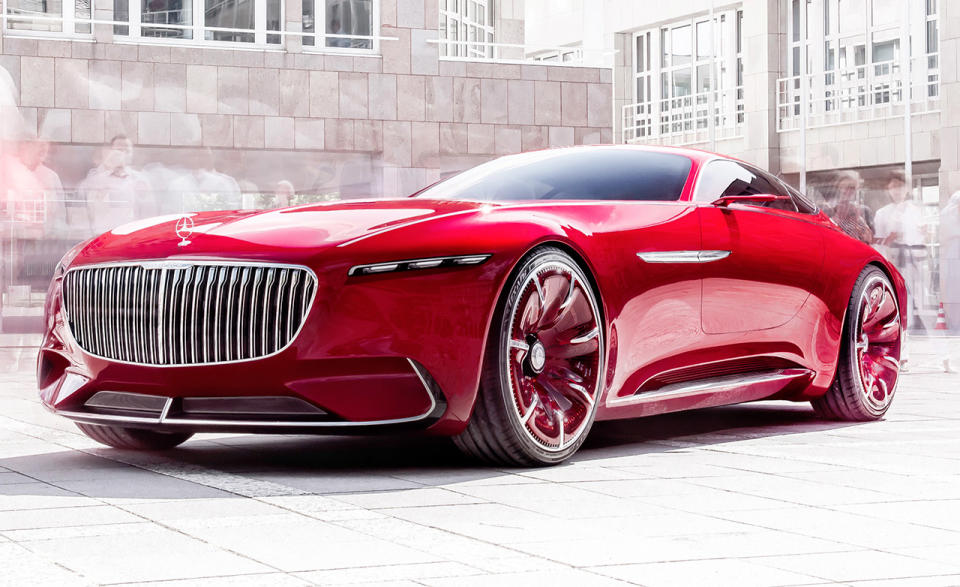

From the November 2016 issue
Daimler’s second attempt to relaunch Maybach has largely consisted of stuffing the back seats of Mercedes S-classes with pillows. Up to now, we’d say this effort deserves nothing more than a good hard rap on the knuckles from Grandpa’s cane, except that those pillows are actually pretty comfy. But old money, by definition, wasn’t born yesterday, and if Maybach is going to compete with the two other German über-luxury marques, the ones both pretending to be from Merrie Olde England, it’s going to have to invent a compelling identity.
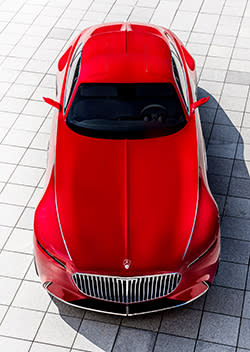
So here’s the pitch: A high-tech autonomous EV that looks more than a little like the coachbuilt, art deco coupes of the ’30s. Rolled onto the lawn at Pebble Beach this past August, the Vision Mercedes-Maybach 6, which we’re going to just call the Vision 6, fit nicely with the Best of Show winner, a 1936 Lancia Astura cabriolet.
Design
We should have set a can of Coke—or perhaps a bottle of Dom—on the hood. Then you might better appreciate just how massive this automobile really is. Mercedes says the “6” in the name comes from its length, even though, at 5.7 meters (18.7 feet), the Vision 6 is still three decimeters short. As we’re all prone to certain exaggerations, and as Maybach already had a model called 57, we can forgive a little rounding up. At 224.4 inches, the Vision 6 is exactly as long as a Chevy Suburban. It’s wider, at 82.7 inches, but at 52.3 inches, it’s about 1.5 inches taller than a Porsche 911. The wheels that hide behind body-colored aerodynamic shields are 24 inches in diameter and carry Mercedes tri-stars in their centers.
The Maybach grille stands thigh high, with chrome blades like a bread slicer’s, ready to julienne pedestrians’ legs. There’s more chrome, of course, tracing the edge of the front splitter, along the rocker panels, and around the windows. A spear of metal emblazoned with the car’s full name breaks up the vastness and rigorously pared-down surfacing of each body side while obscuring the gullwing doors.
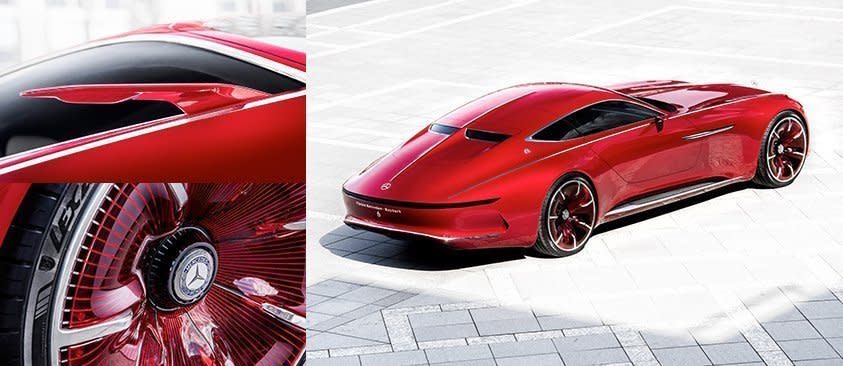
When he describes the Maybach concept as “exaggerated,” Mercedes design chief Gorden Wagener is not exaggerating. At least not until he says, “It’s not so far out there.”
Yes, it has this distinctive bit of Mercedes character, because the first word in Maybach is actually Mercedes. But no shiny bits do as much to proclaim the superiority of the driver as the twin chrome strips that extend from the front edge of the hood back almost to the taillights. With a curve only slightly greater than the horizon and nearly as long, these thin, taut character lines give Maybach’s leviathan an energy missing from most land yachts.
Powertrain
Speaking of energy, the Vision 6 is an electric car. Why? Perhaps because Pebble Beach is in Tesla Country. Better to ask why, if it is electric, does it need a hood the size of a CEO’s conference table? What’s actually under there besides fitted luggage?
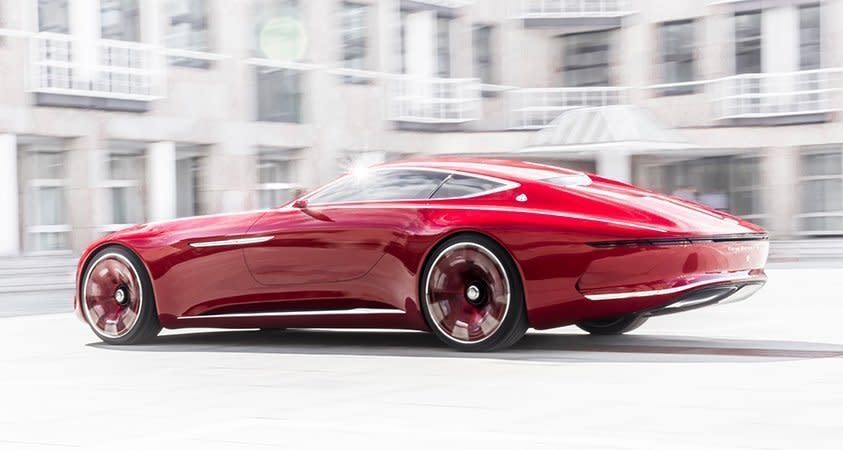
Since the Vision 6 is only a model, its power source could have been anything—solar, Soylent Green, a decommissioned Russian nuclear reactor. This makes the somewhat conservative choice rather underwhelming: A permanent-magnet AC motor is mounted at each corner to provide all-wheel drive and deliver a combined 738 horsepower. It’s underwhelming, but also convenient. The SLS AMG Electric Drive used the same setup. Mercedes says that’s sufficient for the Vision 6 to do zero to 62 mph in less than four seconds and hit a top speed governed at 155 mph. Range is stated at more than 200 miles from its 80-kWh battery, which is packaged under the floor. Apparently nobody at Daimler heard that Tesla now offers a 100-kWh pack.
One other bit of reality amid this surreal and flamboyant assemblage of parts is that the Maybach uses the Combined Charging System (CCS) for fast DC charging. Daimler is one of the backers of this European standard offering an alternative to Tesla’s proprietary Supercharger network. The Vision 6 is said to support a future version of the standard that would deliver 350 kW from a public charging station, rather than the 50 kW most CCS chargers deliver now. (Tesla’s network currently can deliver up to 135 kW.) Mercedes says this would enable adding 62 miles of range to the battery in just five minutes.
Information dances around the windshield in a widescreen head-up display that we hope only works when the car is in autonomous mode.
▾
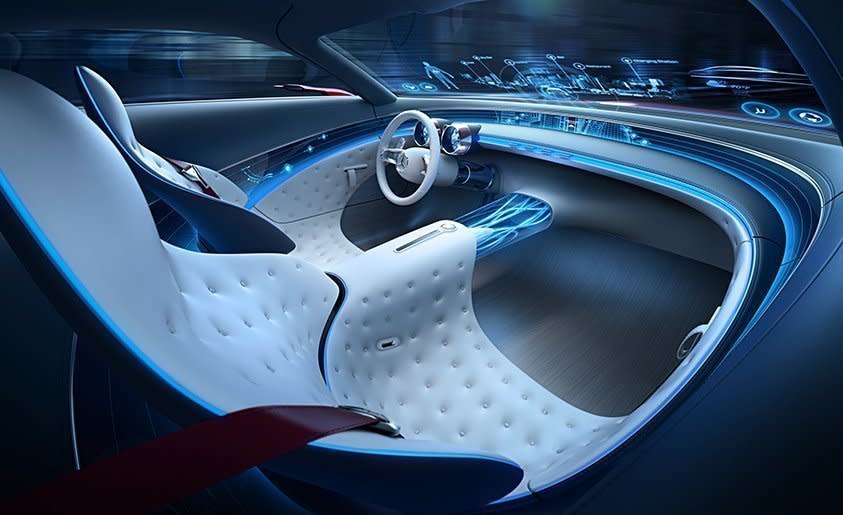
Interior
The inside of the Maybach is exactly the sort of digital playscape you might expect from a car with a future-focused powertrain. Information dances around the windshield in a widescreen head-up display that we hope only works when the car is in autonomous mode. The actual instrument panel on the dashboard is a wraparound strip of touch-sensitive glass, which extends to encompass the door-mounted seat controls before spilling into the bulkhead behind the seats. Mercedes’ interior designers envisioned the car as either a two-seater or a 2+2. The rendering [see right] depicts the former.
Between the seats is a transparent center tunnel in which a light show “visualizes” the vehicle’s energy flow. Upholstery buttons include “body sensor displays” to monitor vital functions and feed data to the climate and seat-massage controls. Yet within this cocoon of fantasy tech, the Vision 6 retains a pair of analog gauges above its two-spoke steering wheel, which is wrapped in leather. Much of the rest of the interior is leather as well, including the dashtop and the door panels, which flow into the curved buckets of the seats. A wood floor made of elm replaces the usual Maybach deep shag but reinforces conventional luxury motifs from the pre-digital era. You know, back when old luxury was born.

 Yahoo Autos
Yahoo Autos 